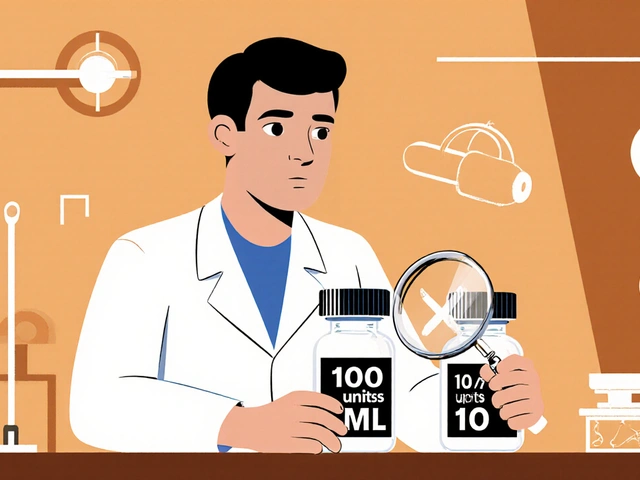Anyone noticed how buying prescription meds in the U.S. still feels like launching a NASA mission? Insulin that costs more than a car payment, asthma inhalers marked up like concert tickets, and everyone’s got a different hack for getting prices down. Most folks know about two big tricks: hunting for rx coupons or buying from Canadian pharmacies. But 2025 isn’t 2015—and it's not just because your doctor now takes Zoom calls from a fake beach background. The latest discount card programs and telehealth bundles are shaking up everything you thought you knew about where to point your wallet. So, who’s winning the prescription price fight this year?
Do Rx Coupons Still Deliver Deep Discounts or Are They Just Smoke and Mirrors?
Remember that time you picked up an antibiotic and the pharmacist whispered, "You want to try our new coupon app?" You probably heard of GoodRx, SingleCare, or WellRx. These discount card programs promise to shave dollars from your bill, and lately new players and bundle deals with telehealth have muscled in. Problem is, the only thing simple about this system is the confusion.
First, let’s break down what “Rx coupons” really are. These are digital discounts you show at the register—basically group purchasing power. In 2025, GoodRx alone claims to service over 170,000 pharmacies nationwide, while newer rivals like ScriptSave WellRx and RxSaver roll out more targeted deals and mobile-first experiences. Here’s the shocker: Not all pharmacies play by the same rules. Big chains—CVS, Walgreens, Kroger, Rite Aid—honor these coupons but sometimes mark up their prices so the discount isn’t as good as it looks. Meanwhile, at independents and grocery stores, the savings can be much sweeter, especially on generics.
Telehealth companies are jumping in with their own discount card bundles. Services like Lemonaid, Sesame, and even Amazon Clinic slap on a doctor visit, prescription, and coupon code as one subscription. For a flat monthly fee ($10 to $30), you can access multiple appointments and “preferred” drug pricing. In some cases, medication is shipped straight to your door, skipping the store entirely.
What's changed in 2025? Two things: real-time pricing (you can watch prices change like airplane tickets) and AI-powered offers. Smart apps grab your insurance info and spit out customized savings. The downside? Pharmacies may switch prices mid-month, and some drugs see so-called “coupon price creep”—the coupon price goes up, not down. A 2024 study from USC’s Schaeffer Center found that some coupon platforms, especially for brand-name drugs, actually increased average retail prices year-over-year, with an 11% jump for diabetes meds between 2022 and 2024.
Here's a quick breakdown of popular coupon platforms and their coverage:
| Program | # Pharmacies Covered | Typical Savings | Subscription/Fees |
|---|---|---|---|
| GoodRx | 170,000+ | 15-80% (mostly generics) | Free / $10+ for Gold |
| SingleCare | 35,000+ | Up to 80% | Free |
| Amazon Prime Rx | 60,000+ | Up to 83% | Prime Membership |
| Lemonaid Health | Direct Mail Only | Up to 70% | $10-30/month for bundle |
So what’s the trick? Always check two or three apps before heading out, and don’t be afraid to call your pharmacy for a price check. If you’re using a telehealth bundle, compare the flat fee to what you’d pay a la carte for visits and meds. Subscription bundles, especially from direct-to-patient clinics, work best for chronic generics like birth control, blood pressure meds, or some anti-depressants, where you need repeat refills without insurance games.
Do you actually save more than using insurance? Sometimes, yes. Especially if your deductible isn’t met or your drug isn’t covered. Check before you swipe that insurance card—coupon or straight cash may be cheaper. One tip: pharmacists are allowed to tell you the lowest price (thanks to a gag clause ban passed in 2023), so just ask point-blank for the best deal including coupons, cash price, and insurance.
Pets need help too: I’ve saved about 60% filling Oliver’s thyroid medication using GoodRx coupons at the supermarket pharmacy. Yep, those cat meds add up fast if you’re not watching.

Canadian Pharmacies: Still the Outsider’s Secret or Losing Their Edge?
The classic hack still makes headlines: Buy your prescription from Canada, where brand drugs average 60% less than U.S. prices. In 2025, you can order online, scan a doctor’s script, and wait for a discreet box from Winnipeg or Toronto. For millions of Americans, this felt like the only sane option when your co-pay jumps higher than your rent.
Here’s the twist this year: Canadian pharmacies have started facing more scrutiny from U.S. Customs, and some big names have closed up shop or changed domains. Plus, a flood of copycat and overseas websites popped up, riding the “Canada” name but shipping from everywhere. Safety is an issue: The Alliance for Safe Online Pharmacies estimates at least 30% of “Canadian pharmacy” dot-coms are either unauthorized or based outside North America.
Still, the legit options deliver. Drugs for chronic conditions (think arthritis, cholesterol, blood pressure) can be dramatically cheaper—especially brand names that don’t have a U.S. generic yet. For example, the cholesterol drug Crestor costs about $465 for a monthly supply in U.S. big box pharmacies, but major Canadian sites still advertise it for around $100 shipped. Insulin is a big one, too: Lantus pens run about $350 in the U.S., compared to $95 from Canada.
If you want to compare beyond the “big name” Canadian sites, look for reliable reviews and see which pharmacies are actually cheaper than CanadaDrugsDirect—the price swing can be huge between sites, and you want true Canadian sourcing, not overseas drop shipping. A little research goes a long way here, and customer forums are gold for up-to-date info.
Regulation is tighter in Canada for most prescription supplies, with real pharmacists on-call and laws requiring scripts from your doctor. Shipping to the U.S. “for personal use” is technically still a gray area—it’s tolerated, rarely blocked, but always double-check the latest rules if your supply is life-critical.
What Canadian pharmacies can’t really touch: urgent needs. If you catch strep throat, you can’t wait 2 weeks for a shipment. Also, shipping fresh drugs—pens, insulin, injectables—has risks during summer heatwaves, even with cold packs. Not all drugs for rare or specialty care can be shipped at all.
Tip: Always compare Canadian pharmacy prices with the very best U.S. coupon price, especially since some generics can actually be less in the States once you stack coupons and discount cards. And your pets? Many cross-border pharmacies also fill prescriptions for furry family; Finn’s fish antibiotics are actually the same formulas used in humans, so you can save there, too.

2025’s Real Game Changer: Telehealth, Subscription Bundles, and Techy Tricks
Skip the old routine of waiting rooms and crossed fingers at the pharmacy counter—now, subscription bundles are everywhere. Need birth control, ED meds, or migraine pills every month? Look at Hims, Hers, Ro, or Lemonaid. For $15-30 a month, you get a telehealth consultation, fast online script, and direct-shipped bottles—sometimes at prices rivaling coupons or even Canadian sites.
It’s not just brand names pushing this, either. Chain pharmacies like Walgreens are rolling out their own digital-only health plans: unlimited virtual visits, same-day prescription delivery, and “members-only” coupon rates. CVS is snapping up digital health startups. Amazon is betting big, expanding Prime Rx’s reach and swallowing up virtual-care companies left and right. These bundles usually have no insurance involved; they target users with high-deductible insurance or those without coverage at all.
But are these bundles always cheaper? Not quite. Some have great deals for first-time buyers but raise prices later, and not every medication is covered. Nabumetone for arthritis? Covered. Specialty cholesterol combos? Maybe not. These services work best for “mainstream” chronic conditions or common urgent needs—think allergies, UTIs, testosterone, birth control, or mental health meds. The wildcard: Drugs for rare conditions, compounded products, or those needing strict cold shipping are usually out.
One plus: Many telehealth services bundle unlimited consults with a flat drug price, so you dodge office visit fees. This can mean major savings if you need regular prescription tweaks. A Kaiser Family Foundation survey from December 2024 found that 42% of adults aged 23-54 had used a telehealth-based bundle to fill at least one prescription in the past year—up from 28% just two years earlier.
There’s also a tech arms race underway. New apps use automated price tracking so they ping you the instant your drug drops at a near store. AI chatbots (not my cat Oliver, he just sits on the laptop) nudge you toward the best coupon or pharmacy based on your location and insurance. Privacy gets sticky, so set app permissions carefully—you want savings, not your whole health profile out in cyberspace.
For families juggling several meds, some services now offer "household bundles"—think Netflix for prescriptions. Everyone in your household pays a fixed monthly fee, each member (even your cat or fish) gets a set number of refills per drug category. These are gaining ground in 2025 for big families or those with complex needs and poor insurance.
A quick look at subscription bundle costs vs. retail in 2025:
| Medication/Service | Retail Price (US) | Average Coupon Price | Canadian Pharmacy Price | Subscription Bundle Price |
|---|---|---|---|---|
| Generic birth control | $27 | $10 | $18 | $15/mo (with telehealth) |
| ED medication 8-pack | $90 | $42 | $55 | $36 (with consult) |
| Brand insulin pens (3 pack) | $350 | $250 | $95 | Rarely offered |
| Common SSRI (antidepressant) | $24 | $7 | $15 | $10/mo (unlimited refills, virtual visits) |
Here’s what works, in plain language: use coupons for everyday generics, compare Canadian pharmacy prices for big-ticket brands (especially anything your U.S. pharmacy prices in three digits), try a telehealth bundle if you’re between doctors or want everything mailed, and always stack apps to see which one’s having a “flash sale.”
Watch out for “coupon stacking” limits, though—some pharmacies block you from using more than one discount card per prescription. If you have chronic health needs, set up alerts and automate price checks so you never overpay (and always double check if the same coupon works for both you and your pets—seriously, Oliver and Finn cost more than coffee every month).
Don’t shrug off the privacy costs and fine print: apps and online pharmacies collect data, bundle it, and sometimes sell anonymized usage trends. Balance savings against your comfort level sharing that info. And yes, keep your script records secure—nobody wants their cholesterol woes popping up in their inbox or social feed.
Wrap up: The cheapest route depends on your medication, how soon you need it, how techy you want to get, and whether you want the drive-thru or a discreet brown box at your door. Experiment, keep an eye on surprise price shifts, and never settle for the “first” price tag. That’s really how you outsmart the system.






April Barrow
26 May 2025 - 00:59 AM
Always check GoodRx and then call the pharmacy directly. I saved $120 on my blood pressure med last month just by asking. Pharmacists know the real prices - they’re not allowed to hide them anymore.
Melody Jiang
27 May 2025 - 04:58 AM
It’s wild how we’ve turned healthcare into a competitive sport. We’re all out here haggling over insulin like it’s Black Friday, while the system just watches and laughs. The real question isn’t which coupon wins - it’s why we’re forced to play this game at all.
alex terzarede
28 May 2025 - 13:20 PM
Canadian pharmacies still work if you pick the legit ones. I use CanadaDrugs.com - verified by CIPA. But don’t trust random .com sites claiming to be Canadian. I lost $80 to a fake one last year. Always check the pharmacy’s license number on the CIPA website. And yes, insulin shipments arrive cold, even in July.
Dipali patel
29 May 2025 - 10:10 AM
GOODRX IS A PHARMA TRAP. THEY SELL YOUR DATA TO BIG PHARMA SO THEY CAN RAISE PRICES AFTER YOU USE THE COUPON. I SAW A GRAPH ON REDDIT THAT SHOWED THE SAME DRUG WENT UP 23% AFTER I USED GOODRX FOR 3 MONTHS. THEY'RE NOT SAVING YOU - THEY'RE TRAINING YOU TO PAY MORE LATER. ALSO, AMAZON IS WORKING WITH THE GOVERNMENT TO TRACK EVERYONE WHO USES PRIME RX. THEY KNOW WHEN YOU TAKE ANTIDEPRESSANTS. THEY'RE BUILDING A HEALTH DATABASE FOR APOCALYPSE.
Jasmine L
30 May 2025 - 05:05 AM
Just used Lemonaid for my anxiety med - $12/month with free shipping! 🙌 Totally worth it. No insurance needed, and the doc was actually nice. Also, my dog’s heart med is cheaper through them too. Pets deserve healthcare too 💖
lisa zebastian
1 June 2025 - 03:58 AM
Telehealth bundles? More like subscription slavery. They lock you in with 'preferred pricing' then raise it after 6 months. And those 'unlimited consults'? They only cover 3 meds max. The rest get billed separately. This is just another way Big Pharma hides the real cost behind a slick app. Don’t fall for it.
Jessie Bellen
2 June 2025 - 20:46 PM
You’re all being scammed. Canadian pharmacies? Mostly fake. GoodRx? They’re paid by pharma to push brand drugs. The only way to save is cash at Walmart - $4 for generics. Everything else is a trap.
Jasmine Kara
3 June 2025 - 10:21 AM
i used goodrx for my diabeties med and it was way cheaper than my insurance, but then the pharmacy said they couldnt accept it because of some system glitch? so i just paid cash and it was still cheaper. weird right? also my cat’s thyroid pill is like $12 now lol
Richie Lasit
4 June 2025 - 06:49 AM
Guys, if you’re on a tight budget, just go to your local grocery store pharmacy. They often have the best cash prices on generics - way better than GoodRx. I’ve saved $60/month on my statin just by walking in and asking. No app needed. Also, don’t forget to ask for samples from your doctor - they’re still a thing!
arthur ball
5 June 2025 - 01:19 AM
Okay, so I tried the Canadian route for my cholesterol med - took 10 days, came in a box that looked like it survived a hurricane, but the pills were perfect. Saved me $280. Then I got a text from the pharmacy saying "Your order was approved by Health Canada" - felt like I’d just won a spy mission. 🕵️♂️💊 Now I use it for my wife’s birth control too. And yes, the insulin pens were cold. I put them in the fridge for 2 hours before using. Don’t be lazy.
Harrison Dearing
5 June 2025 - 19:11 PM
Canadians are laughing right now. We’re scrambling over coupons while they pay $12 for the same pill. And don’t even get me started on how the U.S. lets pharma run wild. It’s not capitalism - it’s extortion with a pharmacy receipt. 🤡
Justice Ward
7 June 2025 - 02:45 AM
My mom’s on six meds. We started using a household bundle through Hims - $45/month for all her stuff, including virtual check-ins. She hates the phone, but she loves getting pills in the mail. We compared every option - coupons, Canada, cash - and this was the only one that didn’t make her feel like she was running a side hustle just to stay alive. Honestly? It’s the most human solution I’ve seen.
bhuvanesh kankani
8 June 2025 - 22:00 PM
In India, we pay less than $5 for most brand-name medications through government-approved pharmacies. The U.S. system appears to prioritize profit over human dignity. I commend those who navigate these complexities with diligence. However, systemic reform remains the only ethical solution. Until then, your diligence is both admirable and heartbreaking.